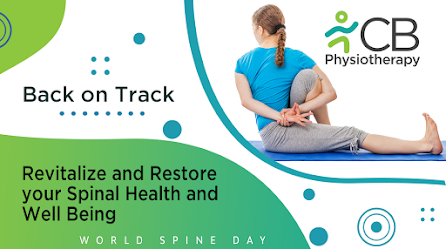World Stroke Day: Managing Post Stroke Rehab by physiotherapy
October 29 celebrated as World Stroke Day, seeks to emphasize the serious nature and high rates of stroke. This day is also observed to raise awareness about the disease prevention and therapy, ensure better survivor support and treatment. Organizations around the world have facilitated activities on this day, emphasizing education, research, and programme globally to prevent the adverse effects of stroke. The annual event was started in 2006 by the World Stroke Organization (WSO) and WSO declared stroke a public health emergency in 2010. The WSO now has an on-going campaign that serves as a year-round interface for advocacy, policy, and outreach to support strides and continue the progress made on World Stroke Day. Over 6 million people die as a result of a stroke. Stroke is the second leading cause of death throughout the world. Medical experts and health advocates across the globe share similar messages on World Stroke Day. The messages range from stressing the importance of quick action during a suspected stroke to simple tips for preventing stroke. Most stroke survivors opt for a rehabilitation program. Physiotherapists recommend the most rigorous therapy program based on age, overall health and degree of disability from stroke.
Why Stroke matters, Factors responsible?
A stroke occurs when the blood supply to part of your brain is interrupted or reduced, preventing brain tissue from getting oxygen and nutrients. A stroke is a medical emergency, and prompt treatment is crucial. Early action can reduce brain damage and other complications. Stroke has two types i.e. ischemic strokes and Hemorrhagic stroke. Ischemic strokes are usually caused by a piece of plaque or a blood clot that blocks blood flow to the brain while sudden bleeding can cause a hemorrhagic stroke. This happens when an artery in or on top of the brain breaks open. The leaked blood causes the brain to swell, putting pressure on it that can damage brain cells. A stroke can cause lasting brain damage, long-term disability, or even death.
FAST is an acronym used as a mnemonic to help detect and enhance responsiveness to the needs of a person having stroke. The acronym stands for:
· Facial drooping: Facial weakness can indicate a stroke. A person having a stroke, one side of their face may appear droopy.
· Arm weakness: A stroke can cause muscle weakness, numbness and paralysis on one or both sides of body. A person may be unable to lift one arm or one are may be drifted.
· Speech difficulties: Strokes can also affect speech and understanding. Difficult speaking or slurred speech indicates a stroke.
· Time to call emergency services: Seeking immediate medical help is important if a person experiences any of the above symptoms
Chances of having a stroke increase with certain risk factors associated with it. High blood pressures, Heart diseases, Diabetes, smoking, and cholesterol often increase the chances of having stroke. However adopting a healthy lifestyle, changing in eating habits, and regular exercises are the best steps that can reduce the likelihood of having a stroke.
Physiotherapy For Post Stroke Rehabilitation:
Physical Therapy plays an important role in the process of rehabilitation after stroke. As a part of the interdisciplinary team, physiotherapists work in concert with the managing doctor and other rehabilitation specialists to provide stroke patients with a comprehensive rehabilitation program. The stroke physical therapy rehabilitation program involves a dynamic process of assessment, goal-setting, treatment and evaluation; its coverage spans from the acute stage, through the rehabilitation stage, to the community stage. The whole rehabilitation program is predicated on two general components. The first includes preventive measures targeted at maintaining physical integrity and minimizing complications that will prevent or prolong functional return.
Physiotherapy is an integral component of the road to recovery from a stroke as rehabilitation continues as long as the person is showing measurable benefit from treatment and has achieved their agreed goals. Rehabilitation improves recovery of function and mobility after stroke. Post-stroke, physiotherapists begin rehabilitation in short frequent spells, focused on getting out of bed, standing and walking. This repetitive task training helps people regain movement and relearn everyday activities. Physiotherapists often work with other professionals to help you with the range of problems that stroke can cause. Physiotherapy applied early in the patient journey will improve, function, health, and independence.
Physical therapy enables people to relearn lost abilities, regain independence and reduce the risk of further strokes. Physiotherapists use assistive equipment to enhance stroke rehabilitation. Robot-assisted devices support people to walk independently while treadmill training improves walking speed and endurance. Physiotherapy helps stroke survivors incorporate the physical activity recommendations into their daily routine to reduce the risk of another stroke by up to 35%. Physiotherapists can provide circuit training, involving intensive repetition of everyday activities, to help people walk further, faster, with more independence and confidence. Integrating endurance and strength training into rehabilitation reduces disability. Core stability and exercises incorporating balance, weight-shifting and gaits improve balance after stroke.
https://cbphysiotherapy.in/blog/world-stroke-day-managing-post-stroke-rehab-by-physiotherapy






